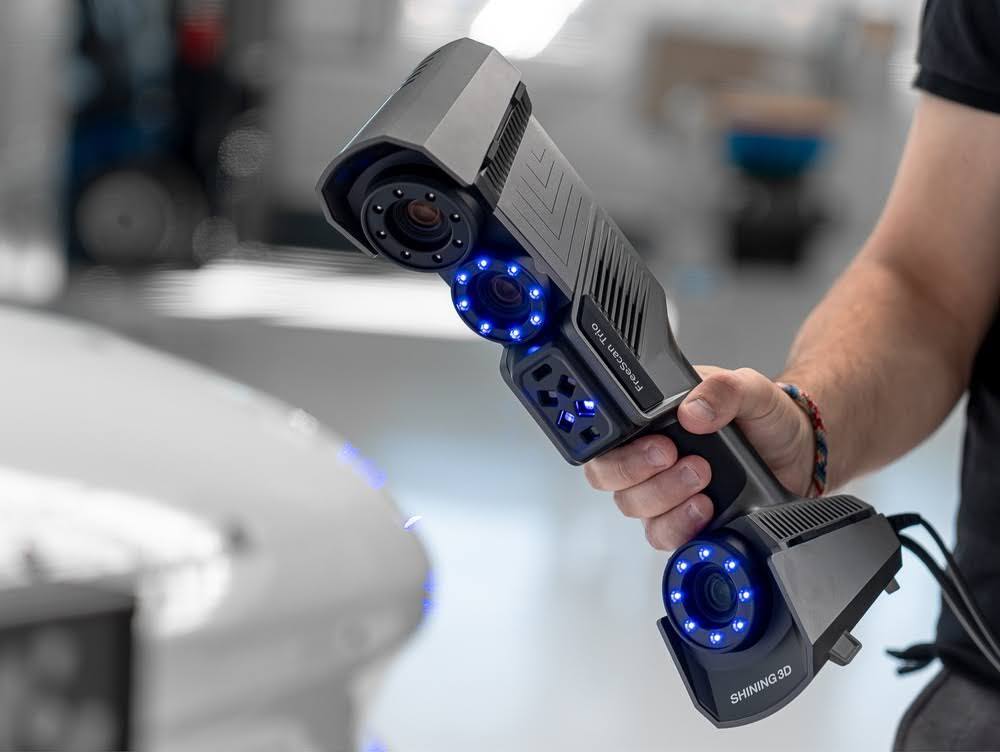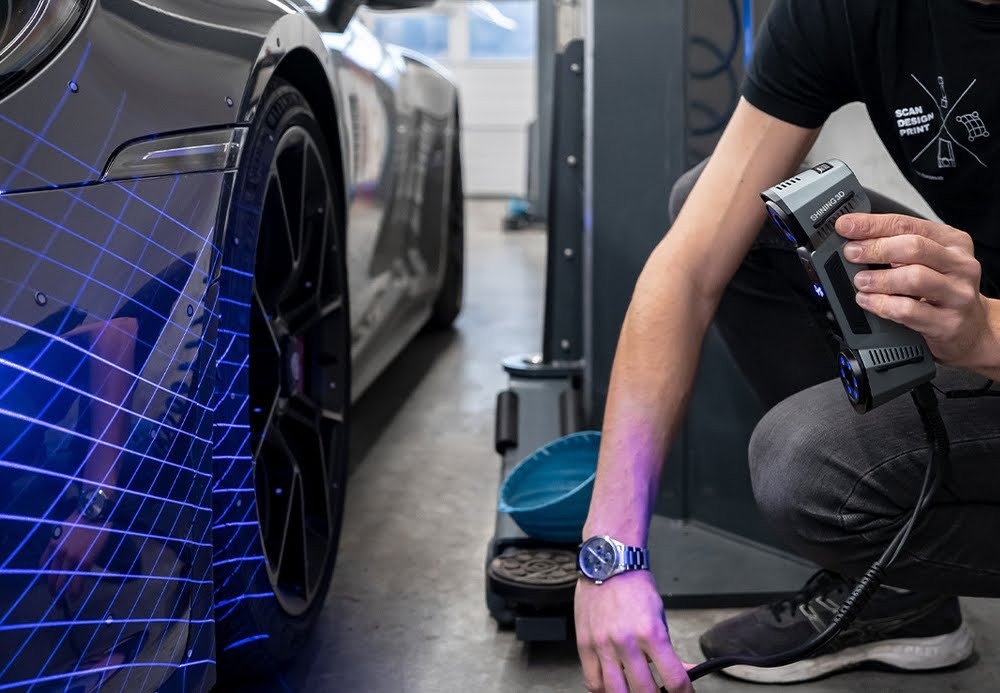5 Benefits of 3D Scanning That Make It a Game-Changer for Any Industry
11th Jul 2025
Let’s be honest—tech moves fast. And when something sticks around longer than a hype cycle, there’s probably a solid reason for it. That’s exactly where 3D scanning lands.
Whether you’re in the medical industry, aerospace, art restoration, or automotive prototyping, the benefits of 3D scanning are hard to ignore.
It’s not just another cool tool in the workshop—it’s a fundamental shift in how we capture, understand, and replicate the physical world.
You know what? The magic lies in its precision without the hassle. We're talking detailed digital replicas made from real-world objects, down to the scratches, seams, or subtle asymmetries.
And the kicker? It’s faster, more accurate, and usually cheaper than old-school methods. Let’s get into the five big reasons industries are practically tripping over themselves to get on board.
1. Precision That Doesn’t Flinch
Ever tried taking measurements by hand, only to realize later that one off-angle threw the whole thing? Yeah. 3D scanning doesn’t play that game.
At its core, 3D scanning builds incredibly accurate digital models by capturing millions of data points—laser-fast, no pun intended.
Whether you're scanning a mechanical part for reverse engineering or preserving an ancient sculpture, the level of detail is borderline obsessive—in a good way.
Even better? The accuracy doesn’t depend on the operator having the steadiest hands or the sharpest eyes. The technology does the heavy lifting.
That’s why manufacturers, architects, and even medical professionals trust it for anything where precision matters. And let’s face it—when doesn’t precision matter?
2. Speed That Cuts Down Lead Times
Now, time is one thing we all wish we had more of—especially in industries like automotive, aerospace, or even film prop production, where deadlines are brutal. Traditional methods of capturing dimensions? Slow. Painfully so.

With 3D scanning, you’re looking at capturing the geometry of an object in minutes, not hours or days. What once took a full afternoon of measuring, documenting, and maybe a couple of do-overs can now be wrapped up before your coffee gets cold.
This kind of speed doesn’t just save time on the job—it saves time down the line.
Designers can prototype quickly. Engineers can test faster. Manufacturers can shift into production mode without waiting around for measurements and drawings to catch up.
Think about that: fewer delays, fewer headaches, and a whole lot more efficiency.
3. Compatibility With CAD, CAM, and Reality
Here’s where things get really slick—3D scans play nice with your favorite software. From SolidWorks to Autodesk Inventor to Rhino, the point cloud or mesh generated by a 3D scan slides right into your existing workflow.
That means no more guesswork when redrawing parts. You’re not approximating; you’re working with the real deal—every curve, every imperfection, every angle.
This kind of interoperability changes the game in product development, maintenance, and quality control.
Say you’re retrofitting a machine that’s been out of production for 30 years. You scan the part, tweak the model, and get it fabricated. No blueprint? No problem. The scanner is the blueprint.
And here’s something folks don’t talk about enough: being able to overlay new designs on top of the scanned data helps avoid interferences before they even happen. It’s like having a crystal ball—but for engineering.
4. Non-Destructive Inspection (Because Breaking Stuff Costs Money)
Okay, real talk: tearing something apart just to see what’s wrong with it? Expensive and risky. Enter 3D scanning, stage left.
When it comes to inspection, the benefits of 3D scanning are clear. It’s non-invasive and non-destructive. You get a full picture of wear, warping, or structural integrity without touching a single bolt.
In industries like aerospace or heritage conservation, this is huge. You don’t want to poke around a 14th-century statue or crack open an aircraft engine just to get a closer look. You want to see what’s going on without putting anything at risk.

And even in less critical settings—like checking a prototype or comparing a manufactured part to its digital twin—3D scanning gives you fast, clear answers.
Is it within tolerance? Is there deformation? Is the assembly still aligned? You’ll know in a heartbeat.
5. Archiving and Reproduction That Go Beyond Photos
Photos are great. But they’re flat. And when you need to store, replicate, or share physical geometry across teams or generations, 2D just doesn’t cut it.
3D scanning creates digital twins that preserve form and function for the long haul. Want to rebuild a vintage race car with no access to parts?
You scan the existing components and manufacture replacements. Want to digitally archive priceless art before it’s lost to time? Scan it and back it up in the cloud.
And the cherry on top? These digital files can be shared globally in seconds. Whether it’s engineers on the other side of the country or collaborators in a different time zone, everyone can work with the exact same data.
Oh—and if you’re in entertainment or gaming? Those hyper-realistic character models? Yeah, many start with real-world 3D scans. Suddenly, your digital environments feel a little more… grounded.
The Bigger Picture: Why This Isn’t Just a Trend
Let me put it like this—3D scanning is doing for measurement what GPS did for navigation. It’s accurate, it’s fast, and it’s taking guesswork out of the equation.
From Fortune 500 manufacturers to garage-based inventors, everyone wants to work smarter. And that’s exactly what this tech delivers.
The applications of 3D scanning are wide-ranging, and the benefits aren’t abstract—they’re tangible, measurable, and already reshaping industries.
It doesn’t matter if you’re streamlining a workflow, inspecting a damaged part, or creating a new product from scratch. What you’re really doing is eliminating friction. And in business, less friction = more progress.
Why Umax Is the Name to Know
As you can see, the benefits of 3D scanning are crystal-clear: greater precision, faster workflows, reduced costs, and better decision-making at every stage of your project.
If all of this sounds like a major shift, it is. And when you're ready to get serious about accuracy, speed, and results, Umax is ready to help.
With cutting-edge technology and a team that speaks your language—whether it's manufacturing, engineering, or digital artistry—Umax delivers professional-grade 3D scanners designed to fit seamlessly into your process and deliver measurable impact from day one.
Ready to see what 3D scanning can do for you? Let Umax make it real.
Contact us today to request an online 3D scanner product demo or ask any questions about our products and pricing – we’re always happy to help!

